Many car owners regularly check and fix their cars to keep them running smoothly. But have you ever considered looking after your car’s windows? It might surprise you, but putting tints or films on your car windows does a lot more than just make your car look good or keep people from seeing inside. Adding window tints can offer many lasting advantages that help keep both you and your car safer and in better condition.
In this blog, we will explain the benefits of window films and different Types of Window Tint.
What is Window tint film?
Window film is a slim layer, often made from polyester, with several coatings that reflect light. It’s used to upgrade existing windows in cars, homes, and businesses to save energy. When experts put this film on windows, it doesn’t just cut down energy bills and fuel costs, but it also protects things inside like a car’s interior, furniture, curtains, and floors from fading. This is because it stops harmful UV light from getting through.
Benefits of Installing Different Types of Car Glass Film
There are multiple window tint film types available in the market; but before knowing them, we want to enlighten you about the benefits of car glass films:
1. Protecting Your Car’s Interior with Window Tinting
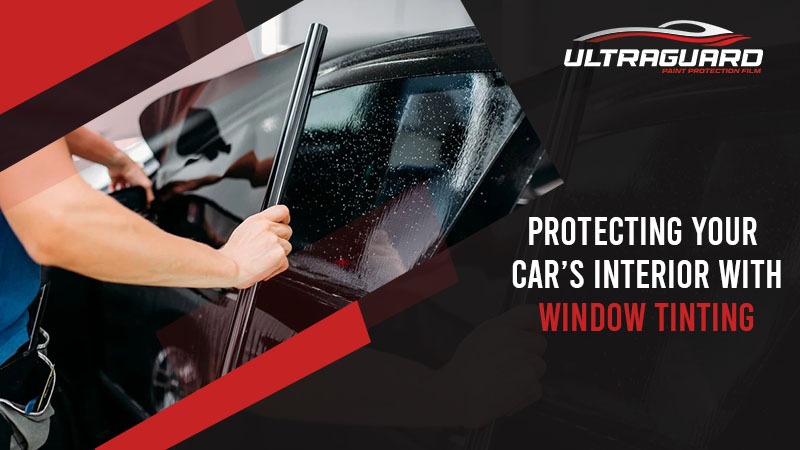
Getting your car windows tinted by professionals can help keep your car’s seats and dashboard looking fresh and new. Window tint helps by blocking the strong sunlight that can make the colors in your car’s interior fade and even crack over time.
2. Shielding Against UV Rays with Window Tint

Car window tints can filter out almost all harmful UV rays from the sun, which can cause skin damage and even skin cancer. These rays are invisible but can be very unhealthy with prolonged exposure. Even a clear window tint can help protect you and your passengers from these dangerous rays.
3. Keeping Your Car Cooler with Tinted Windows
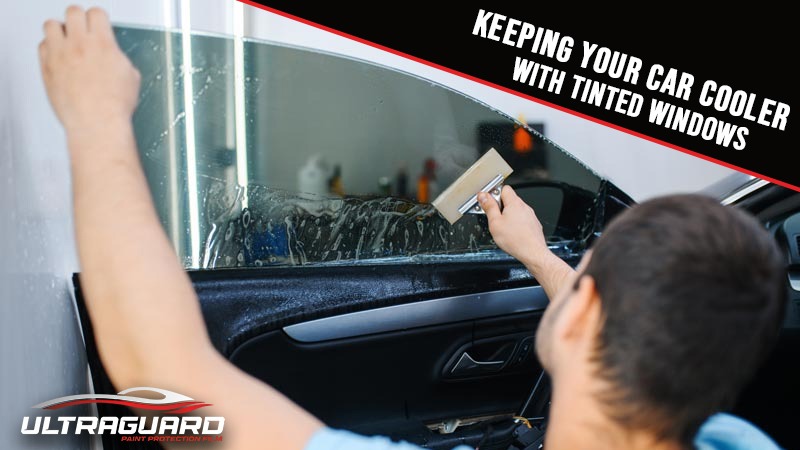
Window tinting can significantly reduce the heat inside your car, making it easier to manage the air conditioning for everyone inside. Depending on the type of tint, it can block a large percentage of solar heat, making your car more comfortable and reducing the need for air conditioning, which, in turn, can save on gas.
4. Enhanced Safety with Window Tint
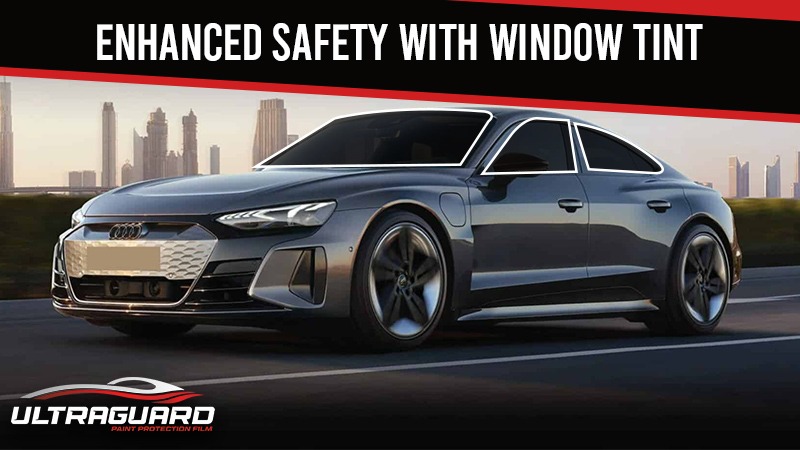
Window tint adds an important layer of safety to your car. It can prevent the glass from shattering upon impact, whether from an accident or an attempted break-in, keeping passengers safe from glass shards and keeping the car more secure from theft.
5. Improved Privacy and Security with Tinted Windows
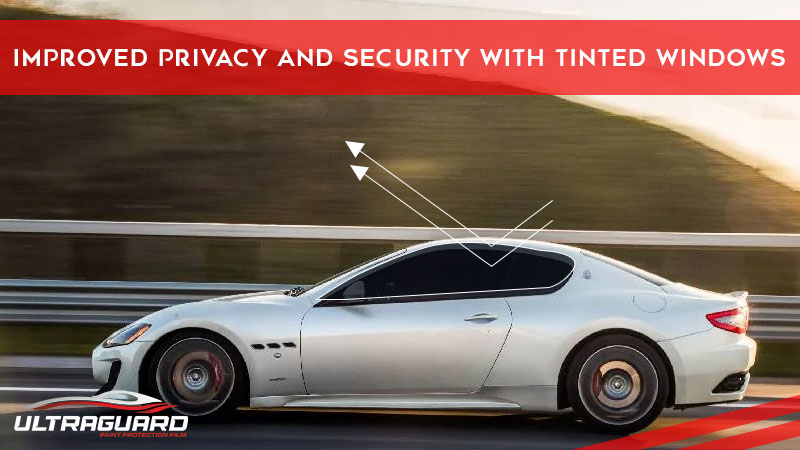
Tinting your car windows gives you and your passengers more privacy and protects valuables inside your car from being seen by outsiders. With a range of tint shades available, you can choose how much privacy you want without sacrificing visibility.
Types of Window Tints
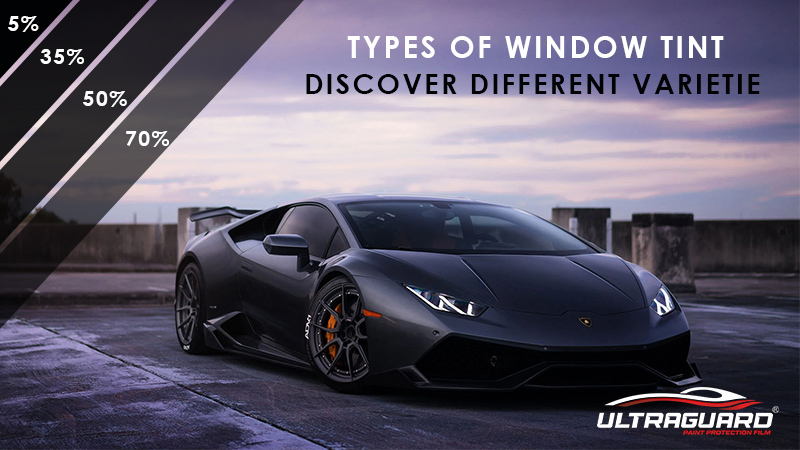
In this section, we will explore different types of car window tint, so that when you make a choice, you make the right one.
1. Dyed Window Tint
Many people put colored film on their car windows more for looks than for function. If you’re after the darkest possible appearance for your car, choosing a dyed tint that looks almost solid from the outside is your go-to choice. Dyed tint also helps keep your car cooler by soaking up the sun’s warmth, which then moves to the glass and out of the car, keeping you and your belongings more private.
Pros of Dyed Tint:
- Cuts down on glare.
- Doesn’t mess with your electronic signals.
- Isn’t shiny.
- Saves money.
- Looks the darkest.
- Keep your car interior from sun damage.
Cons of Dyed Tint:
- Can peel apart over time.
- Might bubble if not applied correctly.
- Doesn’t keep out as much heat.
- Color fades under UV light.
2. Metalized Window Tint:
This tint has tiny metal particles in it, making it thicker. It has several layers, including one that sticks to your window and another that keeps UV rays out, plus the metal layer that reflects heat and makes the glass darker. It’s tougher and gives your windows a shiny look, which might not be everyone’s style. However, the metal can interfere with electronic signals.
Pros of Metalized Tint:
- Reduces glare and UV exposure.
- Doesn’t get lighter over time.
- Tough and durable.
- Reflects heat effectively.
Cons:
- More expensive due to the metal.
- The shiny look might not be what you want.
- Can disrupt electronic signals.
3. Hybrid Tint:
Combining dyed and metalized tints, this option brings the best of both without the downsides. It’s not as dark as pure dyed tint but blocks a good amount of light and looks crisp. It doesn’t fade easily and avoids the common issues of both other types.
Pros:
- Reduces heat and glare.
- Doesn’t affect electronics.
- Durable.
- More affordable than metalized tint.
- Protects interior from fading.
Cons:
- It’s more costly than dyed tint but with fewer downsides.
- It comes in fewer color and shading options.
4. Carbon Tint:
For a dark, matte look that also protects your car’s interior, carbon tint is ideal. It blocks harmful rays and keeps your car cooler without affecting electronic devices. It’s very durable and it doesn’t fade like dyed tint.
Pros:
- No shiny effect.
- Fade resistant.
- Protects from UV rays.
- Cool down the car.
Cons:
- Usually more costly than dyed and metalized tints.
- Need proper care and maintenance
5. Ceramic Tint:
The top-of-the-line option, ceramic tint, uses non-metal, non-conductive ceramic particles to reflect heat and UV rays while allowing clear visibility. It’s the most advanced, offering the best protection and clarity but comes at the highest price.
Pros:
- Absorbs more heat.
- Doesn’t block electronic signals.
- Reflects UV rays without fading.
- Non-reflective.
- Provides clear visibility.
Cons:
- More expensive
- Less privacy than some other options
Different types of car tint suit different climates and preferences. For instance, in colder places, dyed or metalized tints might suffice, but in warmer areas, hybrids or ceramics are better for more protection.
Be Aware About State Window Tinting Laws
Remember, every state has its rules about how dark your window tints can be, which can change depending on which window you’re talking about. For example, some states don’t let you put tint on the front side windows or the windshield. And while some states are okay with any tint darkness on the back side windows, they might be stricter about the rear window.
This is especially important if you’re thinking of adding window tint yourself. Ensuring the tint is applied properly is one reason to consider hiring a professional. They know how to pick the right tint of light that looks good and ensure your car follows local laws.
Final Words
Now that you know about the various types of window tint, you can choose the one that suits your car best. It’s crucial to pick a trustworthy window tint expert. They can explain the advantages of different tints and make sure your tint is put on properly. Plus, pros know the legal limits for tinting in your area.
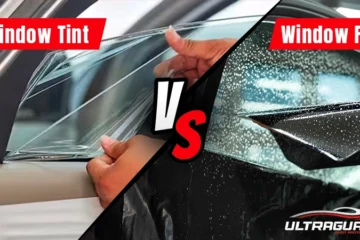

0 Comments